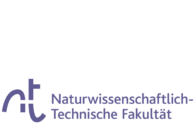|
The lecture, test, and exercises “Inorganic Molecules” deal with the existence, formation, structure (electronic, spin, molecular, crystal), and properties of inorganic molecular compounds and with some simple concepts/answers according to the questions whether and why these molecules or compounds do exist with the respective structure and how to characterize them.
1. Lewis Concept
Each atom shares electrons with neighbouring atoms to achieve a total of two/eight/eighteen valence electrons for Period 1/2/3 elements (closed-shell, noble-gas configuration, but also hypervalence/extended octet rule) in consideration of different resonance structures and/or resonance hybrids, and that all atoms want to have charges as low as possible.
The knowledge of the Periodic Table (groups, periods) is sufficient (see frame Lewis).
|
|
3. Valence-bond theory (VB theory)
VB theory builds up the wavefunction of a molecule by superposition of the valence-wavefunction of the atoms involved in bond formation taking into account the constitution of the molecule and different Lewis structures.
Hence VB theory is closer to the chemist´s idea of (localized) chemical bonding.
To explain the structure/symmetry of molecules (e.g. CH4 with Td symmetry) hybridization of the atomic orbitals was introduced.(see e.g. R. Hoffmann, S. Shaik, Ph. Hiberty, A Conversation on VB vs MO Theory: A Never-Ending Rivalty? Acc. Chem. Res. 2003, 36, 750-756.)
4. Molecular orbital theory (MO theory)
MO theory approximates the wavefunction of a molecule by the linear combination of atomic orbitals (LCAO) using an (energy-) optimization procedure to reach self consistency.
In the first step this results in delocalized canonical molecular orbitals (CMOs) which give either bonding or nonbonding or antibonding contributions to the molecule´s wavefunction. CMOs are most useful to explain and describe electronic excitation, ionization, and polycentric concerted reactions.
In a second step, the set of occupied CMOs can be converted in a completely equivalent set of more or less localized MOs (LMOs). They are most useful to explain and describe Lewis structures and local substitution, elimination, and addition reactions.
MO theory is easier to utilize in computer programs than VB theory.
For the construction of the MOs and some examples see frame MO.
5. Symmetry of molecules and crystals
Important properties of molecules and solids like polarity, chirality, and non-linear mechanical, dielectrical, and optical (ferroic) properties as well as reactivity are determined by symmetry.
The symmetry concept is a useful tool for the investigation, determination, and description of the electron and spin structure of atoms and chemical compounds, the geometrical structure and the vibrations of molecules and crystals, and of chemical reactions.
For some basic definitions and rules see frame Symmetry of Molecules and Crystals
6. Shape/structure determination methods
Useful methods for determination of molecular/crystal shapes/structures and/or functional groups are mainly based on electromagnetic waves.
Electromagnetic radiation consists of transversal waves with velocity c0 ≈ 3·108ms-1.
The relevant characteristics are energy (frequency ν, wavelength λ, wavenumber ~ν ), intensity I, direction, and phase φ, represented by the wave vector s0 (see frame Radiation).
The structure determination methods are connected with the type (energy, frequency, and wavelength range) of radiation and the type of interaction/transition (see frame Methods).
The most important methods are Mößbauer, X-ray, UV/VIS, IR/Raman, ESR, and NMR spectroscopy, and X-ray, neutron, and electron diffraction.
For IR spectroscopy and X-ray diffraction see frames IR short , IR Raman and X-ray powder, X-ray single crystal, and http://www.matter.org.uk/diffraction
7. Hydrogen bonding and packing of molecules
For hydrogen bonding and molecular packing effects on the structures of molecular compounds see frames Hydrogen bonding and Packing of molecules
8. Exampels
As examples and exercises for the above mentioned concepts/methods, the following elements/compounds/anions have been/are to be treated/used:
Carbon, phosphorus, sulfur, oxides, nitrogen oxides, nitrogen oxoions, phosphorus oxides, phoshorus oxoanions, sulfur oxoanions, selenites, sulfur halides, P-N, P-S, P-Se compounds (see frame Examples 1, Examples 2, Examples 3 and http://www.webelements.com).
9. Exercises
For exercises see frame Exercises.
|
